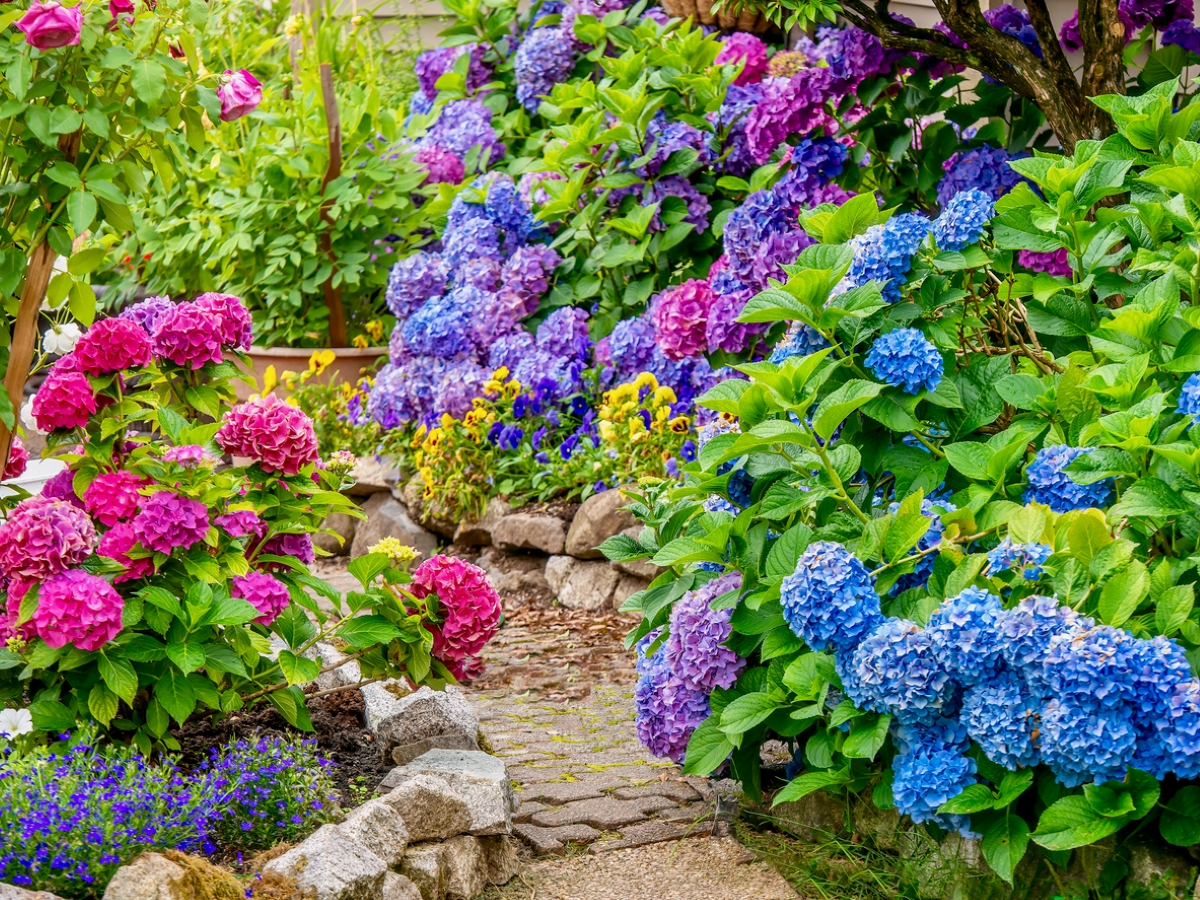We may earn revenue from the products available on this page and participate in affiliate programs. Learn More ›
Call it a romantic garden, cottage garden, or Victorian garden, it’s all about a sentimental connection to the past. According to a study by Monrovia, nostalgia is influencing today’s garden plant selection. “The return to classic plants is part of the larger trend we’re calling the ‘Garden of Nostalgia and Romance,’” said Katie Tamony, chief marketing officer and trend spotter at Monrovia.
It’s a desire to have flowering shrubs, perennials, and annuals that remind us of simpler times, Tamony says. Whether you’re going for a formal Victorian-style garden or a casual cottage garden, roses are a staple in a romantic setting. There are tens of thousands of rose varieties, each one symbolizing love. Enjoy them outdoors or in bouquets in the house. But this trend towards tranquil opulence features a modern twist: new varieties of traditional plants that are easier to grow.
1. Peonies
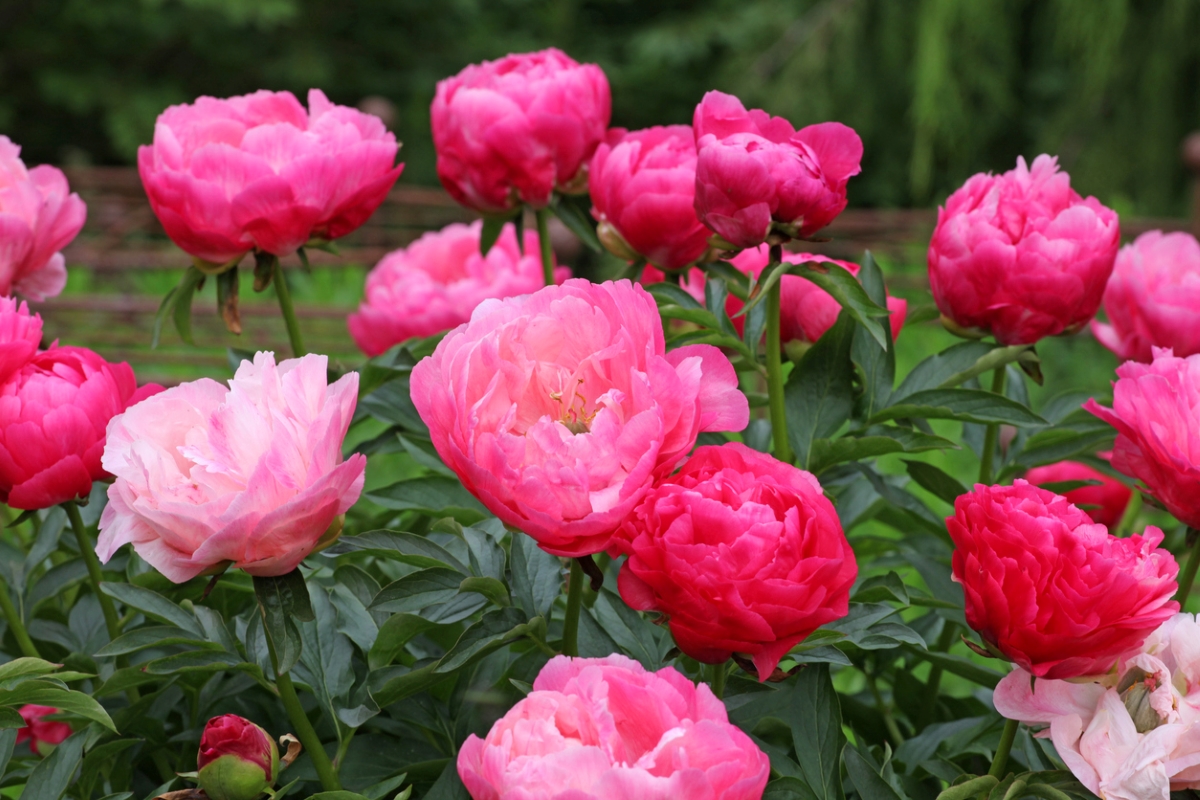
Scent is an important element of a romantic garden – and plays a key role in memory. “Peony is a classic romantic beauty of cottage-style borders, with flamboyant flowers that appear in late spring,” notes Janey Loughrey, garden writer and photographer for Garden Design.
Symbolizing love, romance, and passion, peonies are often used in wedding bouquets and arrangements. Oversized fragrant blooms in shades of white, pink, red, yellow, or coral make a great cut flower.
A sun-loving, bushy perennial, these low-maintenance plants don’t like to be moved, so plant them in a sunny spot sheltered from the wind and leave them alone.
Best For: Raised beds, sunny gardens
USDA Zones: 3 to 8
2. Hydrangeas
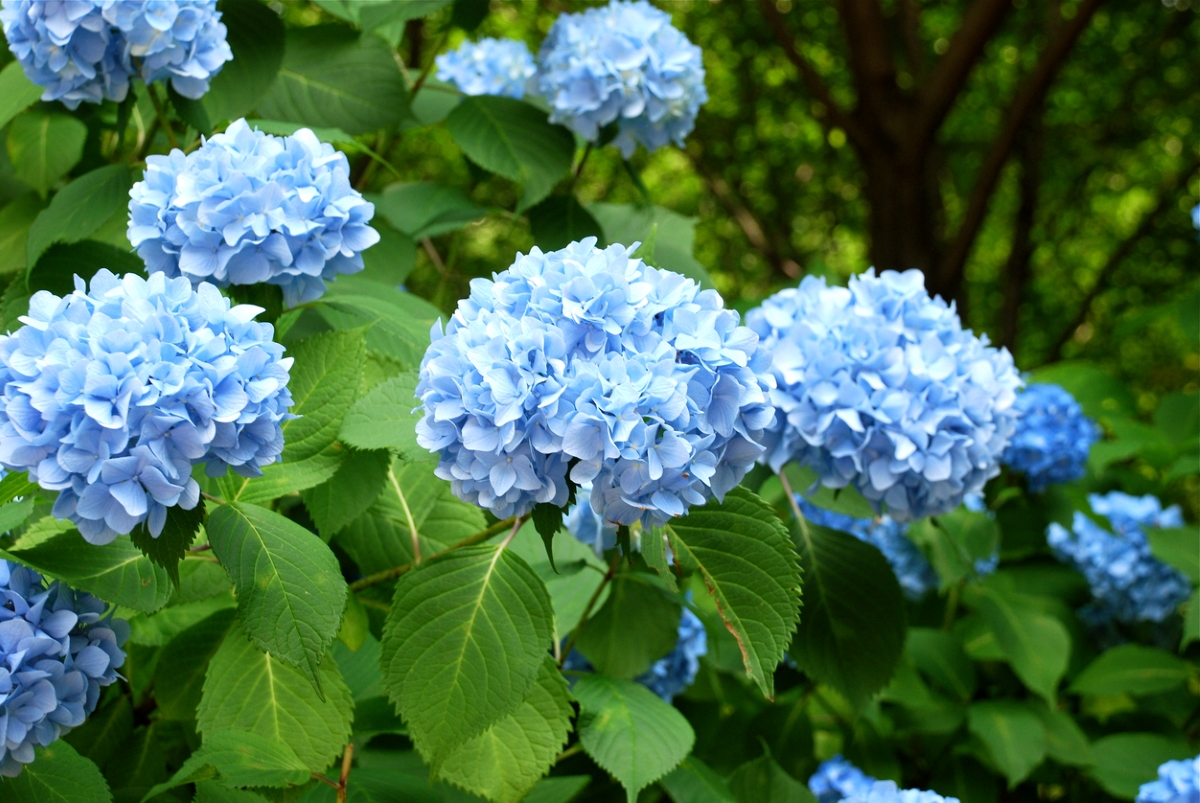
The enigmatic hydrangea produces large clusters of tiny flowers in pink, white, purple, or blue, depending on your soil’s pH. These fast-growing shrubs quickly provide a lavish, intimate atmosphere imbued with soft, pastel colors – a staple of English gardens. While they tolerate many soil types, their sun preference is fussier: too much shade reduces flower production, but hot afternoon sun causes wilt.
Tamony says they “prompt us to cut flowers to bring indoors and surround ourselves with happy, lush flowers.” Hydrangea blossoms add volume to floral arrangements, but their woody stems must be cut properly to avoid wilting in water.
Best For: Next to homes or fences
USDA Zones: 3 to 9
3. Lilac
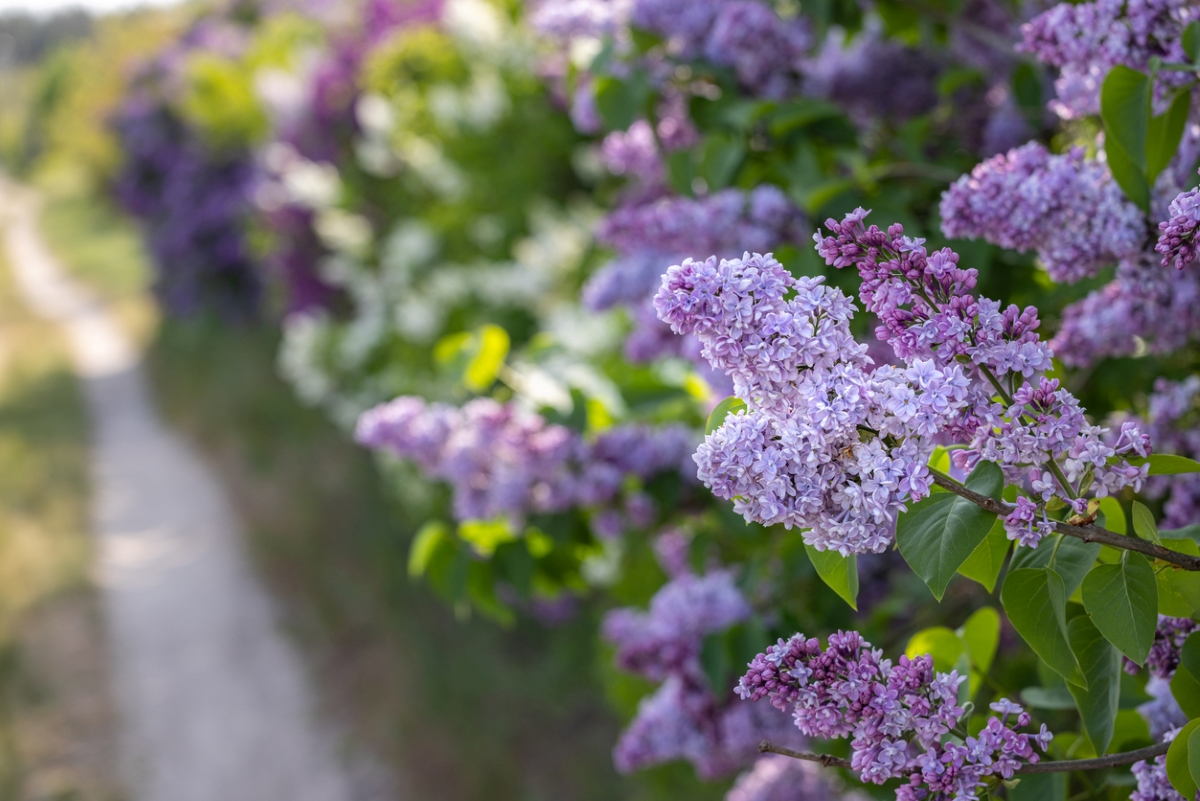
This spring-blooming, deciduous shrub produces grapelike clusters, or panicles, of small white, lavender, or purple flowers perhaps best known for their luscious and permeating fragrance that promotes relaxation. One of the most romantic flowers, lilac symbolizes love, innocence, and purity, which could be why it is used in bridal bouquets as well as cottage gardens.
Whether grown as a specimen plant or a trimmed hedge, lilac is rather low-maintenance once established, although it benefits from annual pruning and fertilization. It does require full sun and a moderate amount of moisture with good drainage.
Best For: Adding height to borders, hedges, sunny gardens
USDA Zones: 3 to 8
4. Bleeding heart
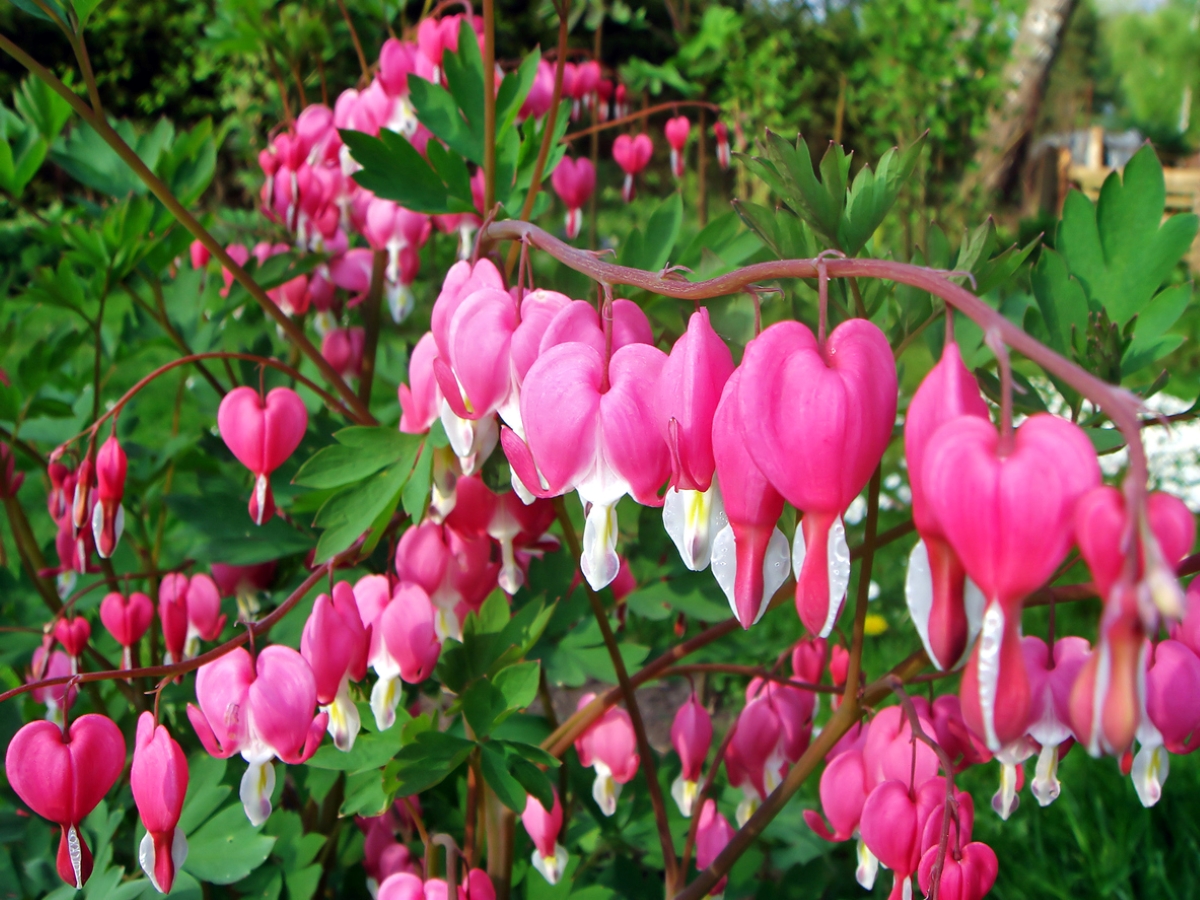
“Bleeding Heart is a hardy herbaceous perennial with elegant white, pink, or red flowers that dangle along [arching] stems like charms on a bracelet,” Loughrey describes. “The heart-shaped flowers can symbolize passionate love, compassion, unconditional love, or rejected love.”
This spring bloomer is reliable and easy to grow, even for beginner gardeners. It prefers full to part shade and moist, well-draining soil with plenty of organic material. A bushy plant, it can grow 3 feet tall and spread as much as 4 feet wide. Resistant to deer and rabbits, bleeding heart is loved by hummingbirds and butterflies.
Best For: Spring gardens, shade gardens
USDA Zones: 3 to 9
5. Lavender
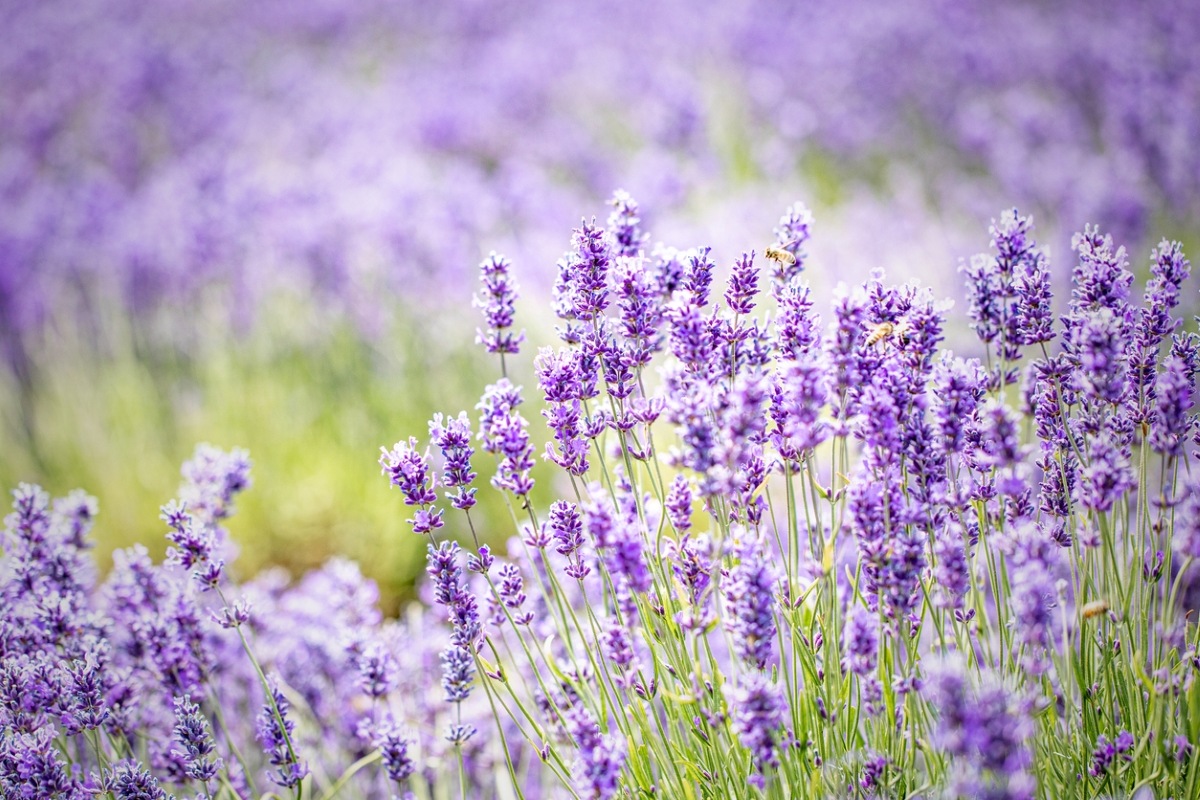
Sometimes known as English lavender, this compact perennial shrub with a semi-woody growth habit is a staple in Victorian gardens, particularly because Queen Victoria especially loved it and had it grown in her gardens. Thus, its purple, pink, or white flowers are iconic Victorian flowers. Its dried gray-green leaves and flowers are used in potpourri and sachets, while its oils are used in sleep aromatherapy.
Tolerant of poor soil and heat, lavender prefers full sun and well-draining soil. While often grown as specimen plants, lavender can be planted as a low border reaching 1 to 3 feet high.
Best For: Borders, herb gardens, rock gardens
USDA Zones: 5 to 9
6. English yew
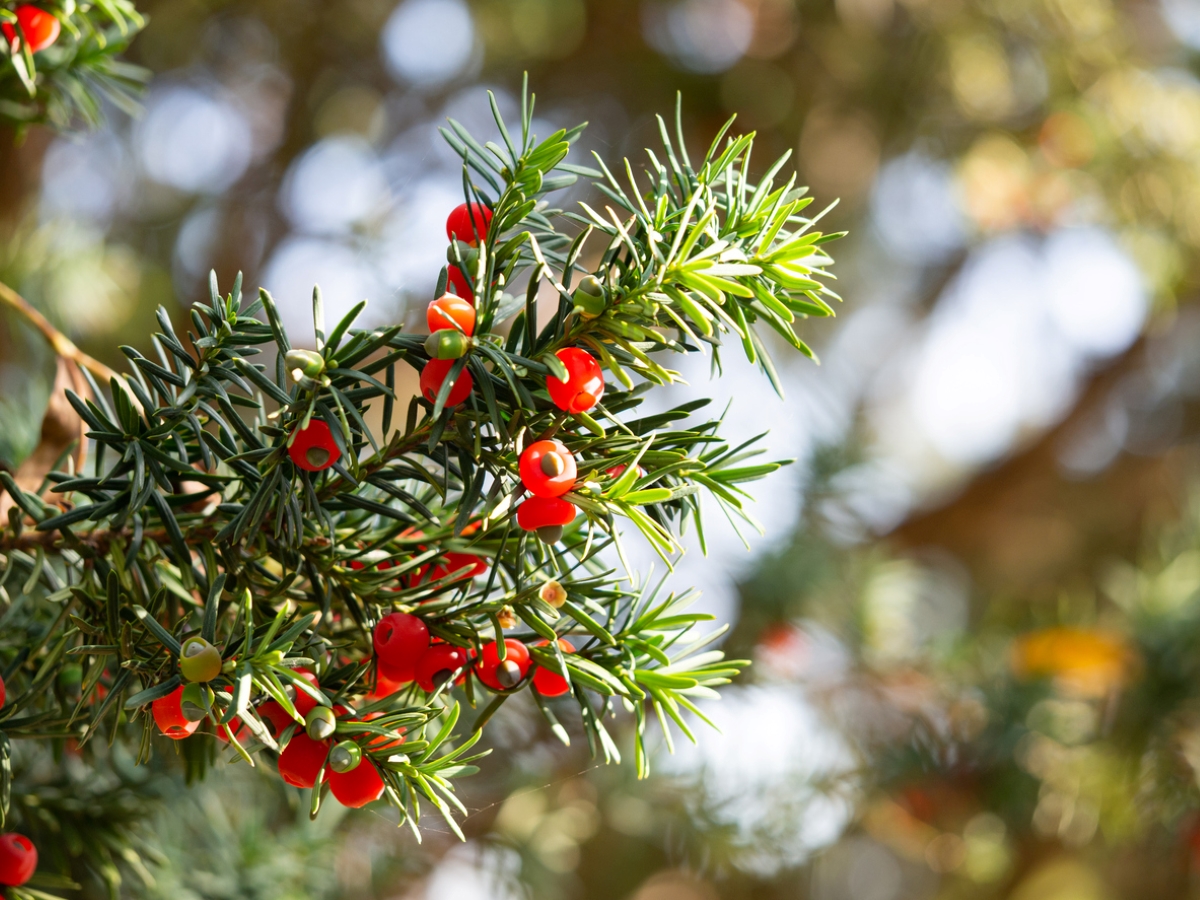
While Victorian gardens were known for producing flowers in a riot of colors, more formal gardens used evergreens as topiary and neatly clipped hedges. Whether laid out in geometric patterns, as a border or privacy hedge, or fronting masonry garden walls, yew defined spaces in the romantic garden.
Easy to care for and tolerant of a wide range of conditions, it can be grown in full sun to full shade. This fast-growing shrub can easily be pruned into shapes. Yews produce pretty red berries, but they and all parts of the plant are toxic to humans and domesticated animals.
Best For: Formal gardens, hedges, and topiary containers
USDA Zones: 5 to 7
7. Sweet pea

A climbing annual with intensely fragrant flowers shaped like orchids in vivid hues of pink, purple, lavender, mauve, peach, red, blue, and white, sweet peas were extremely popular in Victorian gardens as well as cottage gardens.
Typically sown as seed, they are easy to grow, given rich, well-draining soil and full to partial sun, but they require support for their vining tendrils to cling to as they scale to heights 6 to 8 feet.
Their vase life is brief, but sweet peas produce an abundance of flowers. Because they bloom more when harvested regularly, they’re a good choice for a cutting garden.
Best For: Shade gardens, containers
USDA Zones: 3 to 8
8. Hollyhock
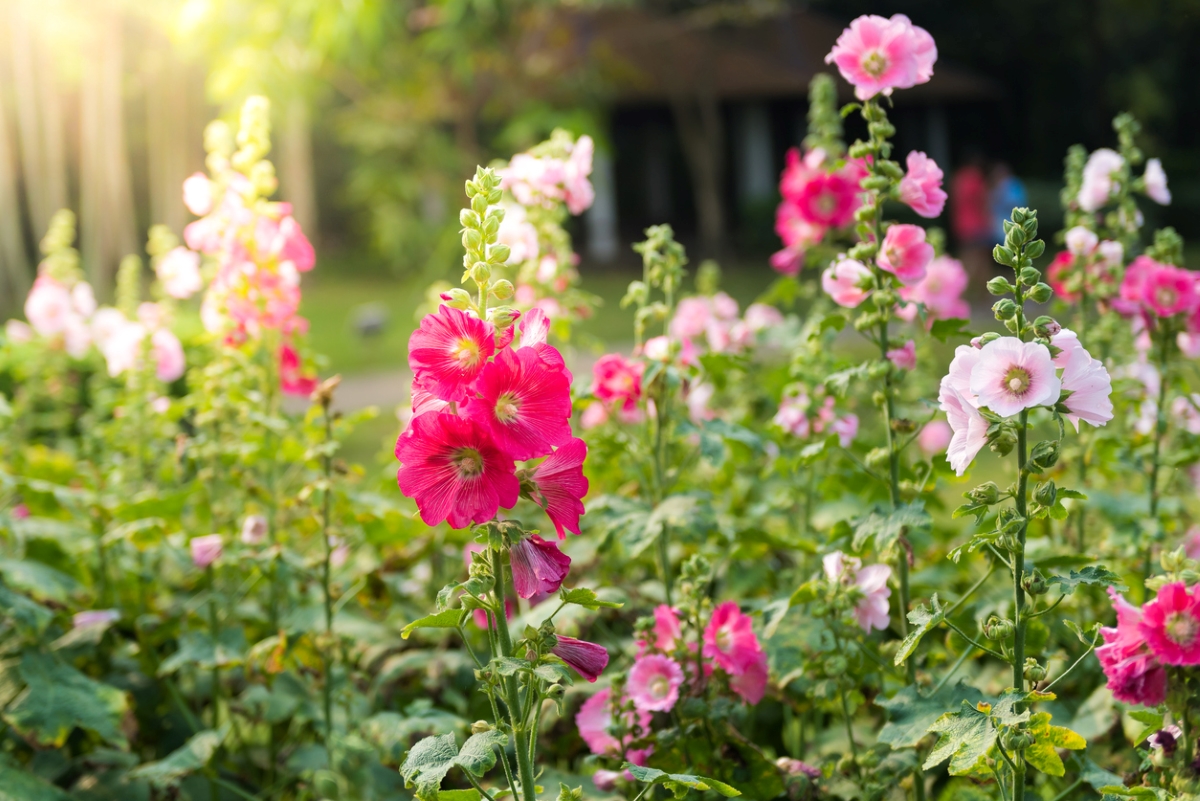
Tall, lanky, columnar spires of large cup-shape flowers of pink, red, purple, or white make the hollyhock a classic in cottage gardens. Laura Janney, founder and owner of The Inspired Garden, says, “They epitomize Victorian charm like no other. Dramatic and whimsical, their bell-shaped blossoms add a touch of enchantment to any garden.”
A biennial that liberally reseeds, the hollyhock enjoys full sun or partial shade. Blooms last from summer to early autumn and attract pollinators. They thrive in cooler climates. “Although they may pose some challenges,” Janney says, “the effort invested in cultivating hollyhocks is undoubtedly rewarding.”
Best For: Adding height at the back of a cut garden, fall gardens
USDA Zones: 3 to 9
9. Wisteria

“Wisteria is a fantastic choice for a romantic, Victorian-era vibe,” says Evan Torchio, CEO and founder at Tree Menders. “Its long, cascading clusters of fragrant flowers in shades of lavender, purple, and white create a stunning, fairytale-like effect.”
The vines of this sun-loving plant can climb trellises or pergolas, adding vertical elegance to the garden. Mature vines of this woody plant can become thick and heavy, collapsing lightweight structures. “Just be aware that it’s a vigorous grower, so you’ll need to provide a sturdy support system and do some regular pruning,” Torchio mentions. Note that it is considered invasive.
Best For: Trellis, pergola, or sturdy entryway
USDA Zones: 5 to 9
10. Hyssop
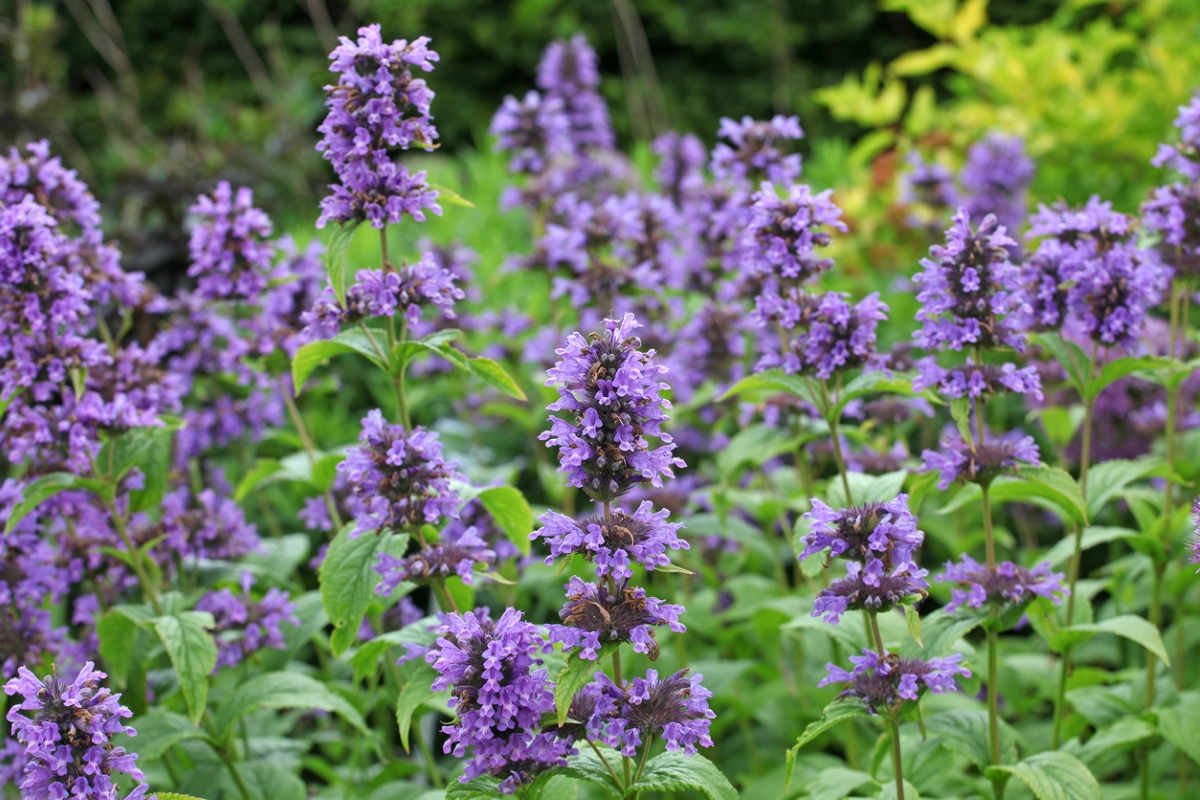
Traditional cottage gardens were functional and included herbs for cooking and medicinal use. Hyssop, with its minty/bitter/anise taste, is used to flavor meat and vegetable dishes and to treat cancer, ulcers, and other ailments.
A short-lived but self-seeding perennial, hyssop is an aromatic herb that makes an attractive garden addition. Blue or lavender spikes emit a sweet fragrance that attracts pollinators. It prefers full sun but tolerates part shade, requires little care once established, and grows to 2 to 4 feet tall.
Best For: Hedges, borders, and containers
USDA Zones: 3 to 8
11. Delphinium
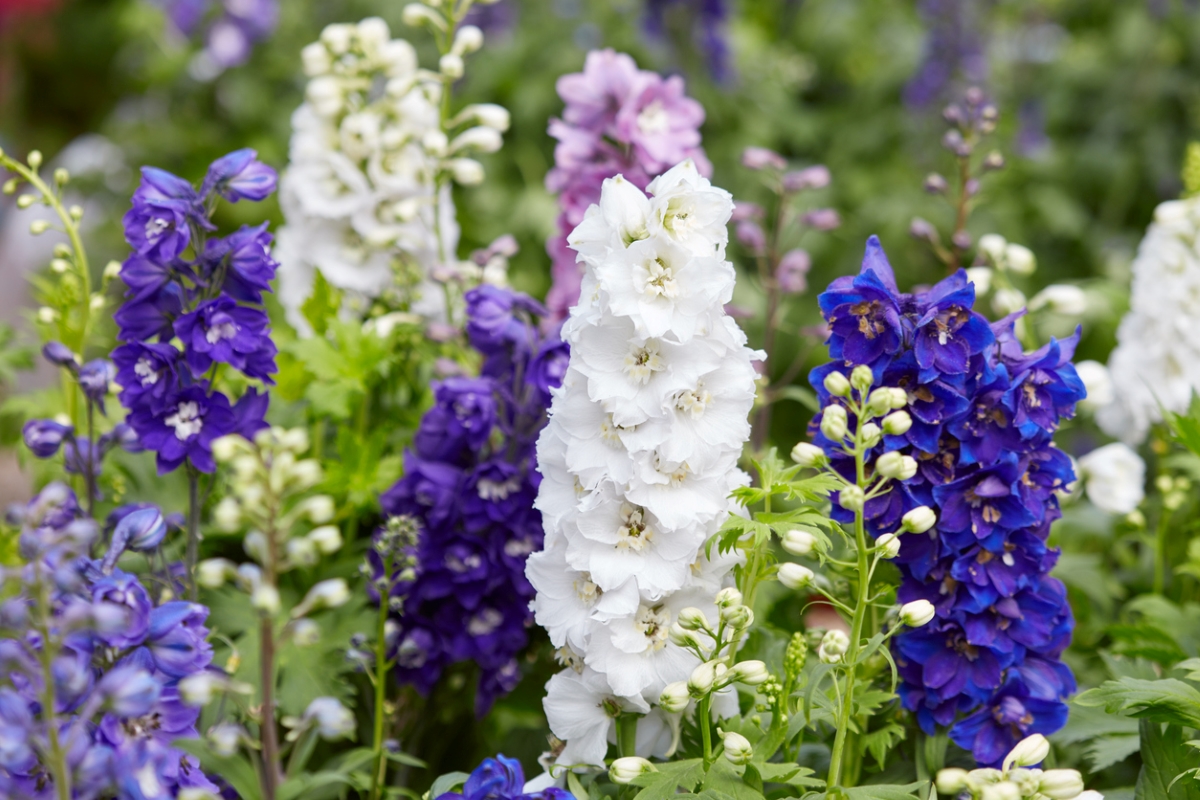
Big, bold blooms in shades of blue define delphinium – although colors include pink and white. This dramatic annual towers over gardens, reaching 7 feet high. As impressive as its size are its semi-double or double blooms, with 2-inch cup- or spur-shaped flowers tightly packed along tall spikes.
Blooming from spring to early summer, delphinium prefers regions with cool springs and can thrive in full sun, but needs afternoon shade in hot regions. They like moist soil and are known as heavy feeders, benefiting from compost and fertilizer. Although an excellent cut flower, they are toxic to people, pets, and horses.
Best For: Adding height at the back of a cut garden
USDA Zones: 3 to 7

